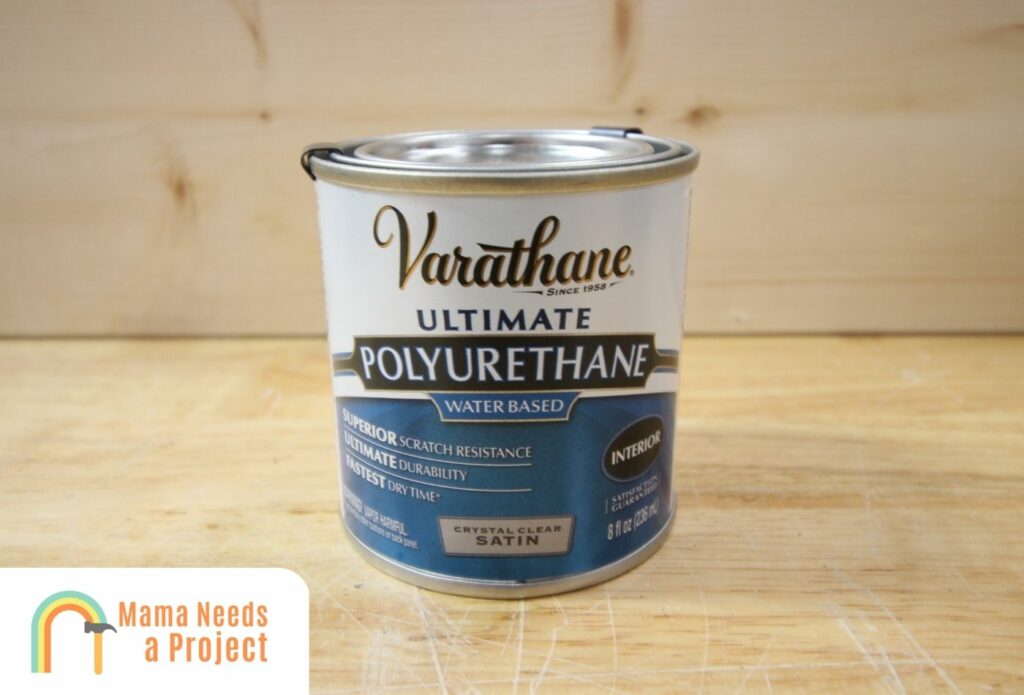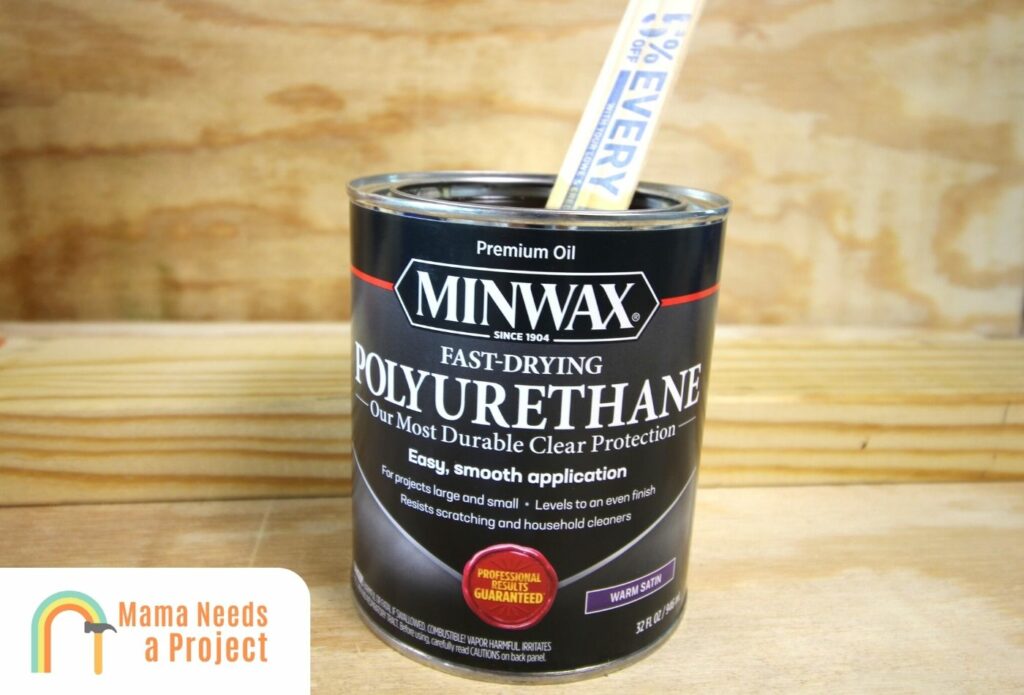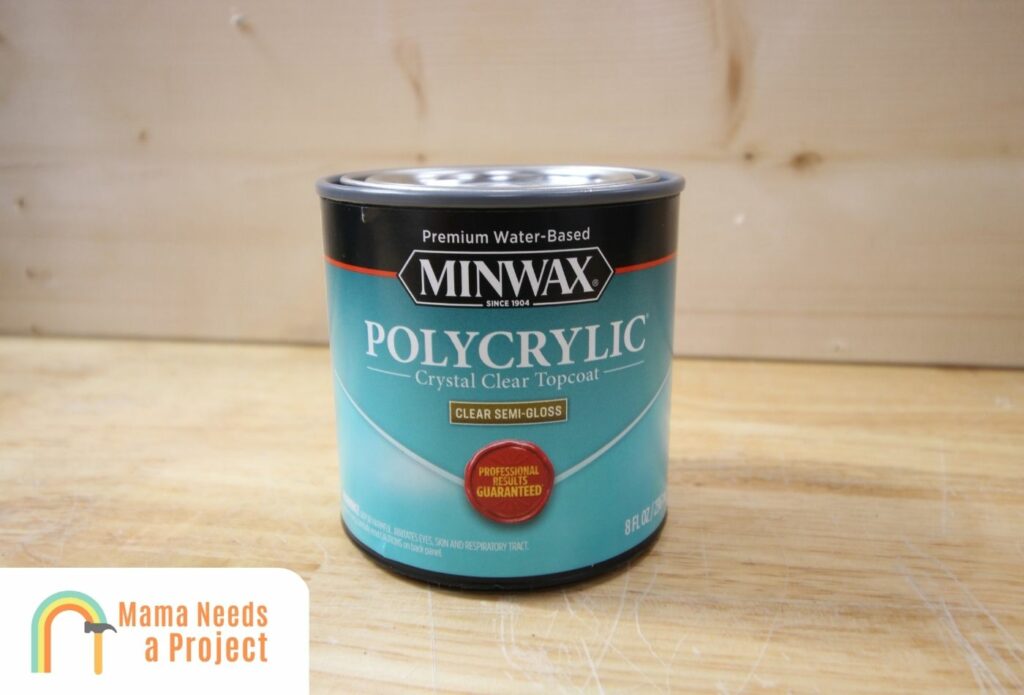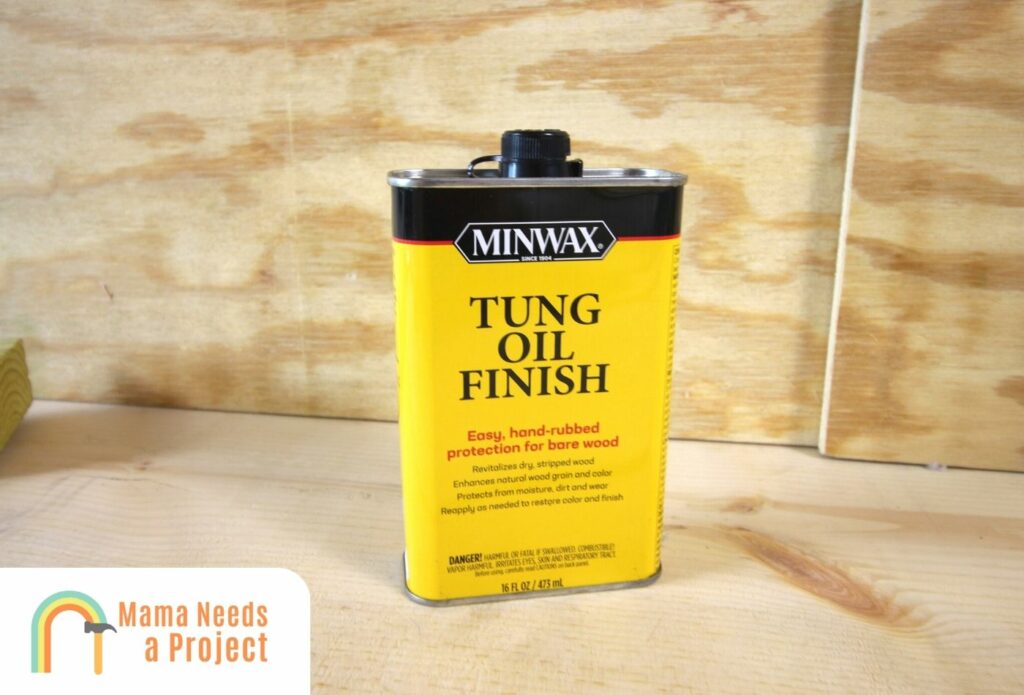Is Polyurethane Food Safe? (Quick Answer!)
Polyurethane is one of the most reliable wood finishes, and it’s used to coat all kinds of wood surfaces.
But is it a food-safe material?
The short answer is YES, but there are some exceptions you need to be aware of. So if you’re wondering “is polyurethane food safe?” and exactly which types will work, keep reading.
- The vast majority of water-based and oil-based polyurethanes are food-safe products that meet FDA and NSF regulations, but only after they’re completely cured.
- Polyurethanes that contain isocyanates, however, should be kept from food since they’re much more toxic, and sometimes they remain toxic despite being dried and cured.
Is Water-Based Polyurethane Food Safe?

Water-based polyurethane is the most commonly used poly, and it’s preferred because it’s quick-drying, easy-to-apply, and much less toxic than oil-based polys.
Because of this, it’s a great polyurethane for wood surfaces that people eat off or prepare food on. Once water-based poly is fully cured, it’s totally food-safe.
But how do you know when poly is fully cured? Well, for one, the poly won’t be emitting a strong, chemically odor. Also, it’ll feel solid and dry.
And since water-based polyurethane isn’t nearly as viscous as oil-based polyurethane and other wood finishes, you won’t have to worry about an excessive amount—which can present food safety concerns—being applied.
So if food safety is important in your household, use water-based poly to protect wood surfaces in your kitchen, dining room, etc.
Is Oil-Based Polyurethane Food Safe?

Oil-based polyurethane is used quite a bit as well, since it’s a durable, long-lasting finish that can accentuate the natural features of a wood surface.
However, it takes longer to dry, and you’ll need to exert more effort to spread it out.
But is it a food-safe wood finish? Well, it certainly has more volatile organic compounds (VOC) than water-based polys and other wood finishes, but despite this it’s still a food-safe product that meets both Food and Drug Administration (FDA) requirements and National Sanitation Foundation (NSF) regulations.
When completely cured, it’s non-toxic, non-marking, and non-allergenic.
That said, if you apply too much and it doesn’t cure all the way through, it won’t be food safe, as some VOC will still be present so it’s critical to ensure your polyurethane has completely cured before using it around food.
Not sure if your poly has cured? Check out my polyurethane drying and curing guide for more info!
Is Minwax Polyurethane Food Safe?

One of the most trusted and preferred polyurethanes is Minwax’s water-based poly.
It’s a clear, easy-to-apply finish that protects wood surfaces from scratches, gouges, dents, and it’s also exceptionally UV-resistant.
And like virtually all water-based polys, it’s food-safe when fully cured.
Plus it’s a durable finish that lasts for years, so you won’t have to worry about it becoming increasingly dangerous over time.
Not only does the product meet FDA requirements and NSF regulations, the company assures that it’s 100% food safe, both on the can and on their website.
However, it’s best to keep potable water out of polyurethane coated containers, since this finish can make the water slightly toxic, especially if the water sits in the container for weeks.
Can You Use Polyurethane on Cutting Boards?
So long as you use a food-safe poly to coat the cutting board, you shouldn’t have a food safety issue later on.
Cutting boards are often coated with poly or another finish to make them stronger.
After all, a kitchen can be filled with harsh environmental factors at times, like when major cooking is being done; the temperature may be high, water may be splashing everywhere, hot pots and pans may be moving from surface to surface.
In this instance, a cutting board needs to be tough, and that’s what poly ensures.
Essentially, you could take a hot pot off the stove and rest it on the cutting board for a few minutes, and afterward the board wood still have a food-safe finish.
Food-Related Surfaces That Are Polyurethane-Coated
Cutting boards aren’t the only food-related surfaces polyurethane is commonly applied to. You can also find many other wood surfaces with a polyurethane coating, including:
- Kitchen & dining room tables
- Countertops
- Cabinets
Polyurethane is also used to protect wooden bowls, sharp knives, and spoons, and many of the metallic surfaces in a kitchen are coated with it, which should underscore just how much of a food-safe coating polyurethane really is.
Best Food Grade Polyurethane
Varathane Polyurethane
Varathane is a well-respected polyurethane brand and it’s one of my favorites. They make both water-based and oil-based polys, and their polyurethane finishes are long-lasting, visually appealing, and less toxic than competing products.
But are Varathane polyurethanes safe enough for food? The only way to know for sure if to check the back of the can you’re using. If you don’t find isocyanates or other harmful chemicals, chances are you’re good to go.
Again, just make sure the poly is 100% cured before you start using that surface for meal prep, dining, etc.
Check out my Minwax vs Varathane comparison for more help choosing which is best for your project!
Krylon Polyurethane
Krylon spray is often used to complete wood projects in a short amount of time, but is this polyurethane safe?
According to the packaging, yes it is. In fact, it cures in just 24 hours.
Still, I think it’s best to give it at least 48 hours to cure.
The polyurethane coat won’t be too thick, and that’s why it can cure much faster the brush-on polys.
Rust-Oleum Polyurethane
Rust-Oleum is another popular polyurethane, one that’s especially good at preventing rust from wearing down metal surfaces.
It can be used on wood too, and according to the packaging it’s food-safe just like Krylon spray.
Here too the cure time is a remarkable 24 hours, but I still like to let at least 48 hours go by.
Food Safe Polyurethane Alternatives
Shellac
Shellac is a resin that’s secreted by the Indian lac bug, and it’s a food-safe finish that’s used to coat a variety of materials.
You can get liquid shellac or dissolve shellac flakes in ethanol before applying it; either option is food safe.
Shellac is closest to polyurethane in terms of strength, yet it’s largely a natural product. That said, if you go with extra-strength shellac, chances are it’ll have toxic chemicals that prevent it from being food-safe.
Pure Tung Oil

Another natural finish, pure tung oil is food-safe once fully cured. It’s preferred because it highlights wood grain and wood’s natural colors, but it’s a little on the expensive side.
Boiled Linseed Oil
Boiling raw linseed oil creates an effective finish that’s food-safe, visually appealing, and decently strong.
The only downside here is you need to be precise with the boiling, otherwise the oil won’t hold up well.
Mineral Oil
Mineral oil is another wood finish that’s great if want to accentuate wood’s natural characteristics.
Petroleum-based, it’s non-toxic and therefore food-safe, and it doesn’t emit harmful fumes like polyurethanes.
The only downside is it’s not as strong as polyurethane, but this isn’t a big deal if you’re using it to coat cutting boards, dishes, etc.
Walnut Oil
Walnut oil is an uncommon wood finish, but it’s an all-around decent product that’s 100% food safe as the main ingredient is a food itself, of course.
Basically, this oil penetrates deep into the wood’s pores, where it eventually hardens to create a durable and visually appealing finish.
Many think this finish is more appealing than mineral oil, but it’s not as strong as polyurethane. Still, it’s good enough for wood dishes, utensils, etc.
Is Exterior Polyurethane Food Safe?
Polyurethane that’s designed for exterior use is extra-strong and exceptionally weather-resistant, but is it safe for food?
Well, as long as there are no isocyanates in the poly, you shouldn’t have a problem. These chemicals are used in some polyurethanes, but more on that later.
So if you’re refurbishing an old picnic table and you can’t decide whether you should coat it with exterior poly or not, just visit your local hardware store and purchase a poly with no isocyanates. Also, you can always go online to confirm the product’s safety.
But you should do both checks before applying any polyurethane finish, as once this stuff is on it can be difficult to remove.
Which Polyurethanes Aren’t Food Safe?
There are many kinds of polyurethane on the market these days, and some aren’t meant for food-related applications.
Specifically, the polys that have isocyanates should not be used anywhere near food or food-related surfaces, since they can be especially harmful in liquid form and when off-gassing.
Polys that are made for manufacturing applications often include these chemicals because they have to be as durable as possible yet flexible enough to withstand temperature fluctuations.
When applying this kind of poly, you need to be especially carful, and they have to be wearing all the necessary safety equipment, as prolonged exposure can cause severely adverse health effects rather quickly.
What Makes Polyurethane Toxic?
Polyurethane isn’t toxic once it’s had a chance to fully cure, but in liquid form it’s much more toxic.
Essentially, there are toxic chemicals in every kind of polyurethane wood finish, but some finishes have more chemicals than others.
Generally speaking, oil-based polys are more toxic because they include synthetic resin, a few solvents, and other harmful chemicals that humans shouldn’t be exposed to.
Even those distinct polyurethane fumes can be harmful, especially to people with respiratory issues and pregnant women.
This is why homeowners often have to leave their homes for a few days after having polyurethane applied to their hardwood floors—the fumes are that toxic!
Which Polyurethane Dries Quickest?
The speed at which polyurethane dries is relevant when discussing its food safety.
Water-based polyurethane dries a lot faster than oil-based poly. Specifically, water-based takes 30-120 minutes to dry, whereas oil-based takes 5-24 hours.
Now, I should briefly distinguish “dry” from “cured”. When polyurethane is dry, this means most of the chemicals have evaporated and a hard film is present, but if it’s not 100% solid then it’s not fully cured.
Remember: only polyurethane that’s 100% cured is food safe; dry poly isn’t.
The curing process for water-based poly takes about 14 days, whereas oil-based poly can take a month to cure completely.
Which Polyurethane Is Most Durable?
The durability of polyurethane is relevant as well.
Going back to the cutting board example, in this instance it’s best to use a durable poly, since it’s likely constant cutting will be done on this surface with a sharp knife.
And if the polyurethane surface isn’t durable, you could cut off small pieces without knowing, and if these are ingested they can be quite harmful.
Again, eating food that’s been prepared on a polyurethane surface isn’t a risk in itself, but actually ingesting a decent amount of dried polyurethane is a completely different story; in this latter case a trip to the emergency room is a good idea.
Final Thoughts
To recap, both water-based and oil-based polyurethanes are food-safe once they’ve had ample time to cure properly.
So if your cutting boards, wood countertops, and other food-related wood items are coated with poly, you don’t need to worry about them making contact with food.
It’s the polys with isocyanates that you need to keep away from food, as these can be especially harmful.

